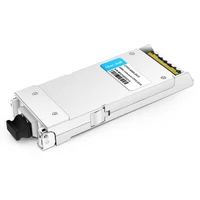There’s no denying that the US and global economy depend heavily on data networks, and their usage continues to grow with the skyrocketing reliance on tech. Along with the applications, data leakage and load tracks have increased vastly over nonsensitive data apps. However, TFPi had a significant impact by reducing the amount of reliance on conventional forwarding and obtaining more info on where specific data points were. Advances in both transmission technology and the coherent optics factors underpin all advances. This paper presents a perspective analysis of the architecture and performance of a future 10000km geographic loop. We also underline the importance of system integration and optimization. Simulations on the impacts of the implant system weights on coherent detection are discussed, as well as signal-noise ratio (SNR) or Inter-Symbol Interference (ISI) mitigation strategies that have potential practical impact for future work.
Table of Contents
ToggleWhat is the 400g CFP2 DCO Transceiver?
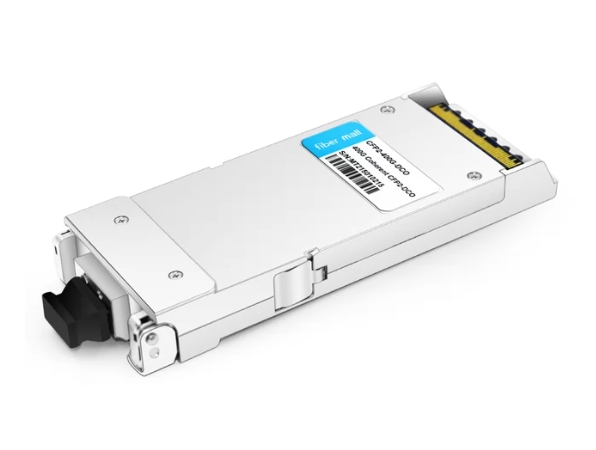
The 400-gram CFP2 DCO transceiver becomes an advanced optical module designed and adapted for high-volume data transfer. It has the support of coherent technology, which takes data transmission and detection of light waves for modulation operations over large distances and precise and efficient performance parameters. The module operates on 400 Gbps of maximum speed and fits into a compact size of such solutions as the CFP2 form factor. These modules pay special attention to the designs used in existing systems. At the same time, sufficient bandwidth is provided to take care of growing traffic for speedy and efficient data communication systems, in particular in duplex timed configurations. The case of the CFP2 DCO’s coherent capabilities enables better signal transmission and adds low latency times, which take care of the weaknesses associated with modern high-speed networking.
Understanding the CFP2-DCO Technology
The 400g CFP2-DCO transceiver integrates coherent optical technology to improve long haul data transmission in both reliability and efficiency. This means the applicability of several bits per symbol through coherent technologies, as the new standards include advanced modulation techniques such as quadrature amplitude modulation (QAM). Moreover, such integration leverages the integration of the DSP to deal with fiber impairments of chromatic and polarization mode dispersion and guarantees the integrity of the signal over long distances. This, therefore, means that the scope of application of the CFP2-DCO is quite diverse, may be in metro or long haul networks. The CFP2-DCO modular design, which is adaptable and scalable, is like an integrator in the advancement of network infrastructures, enabling easy deployment in enhancing bandwidth capabilities that are escalating.
Key Features of the 400g Coherent Module
- Enhanced Modulation Formats: The 400g coherent module uses more complex modulation forms like 16QAM and 64QAM for transmission which allows for more than one bit to be sent per symbol: that greatly augments the spectral efficiency and thus facilitates the transmission of much more information through the preinstalled fiber system.
- Integrated Digital Signal Processing (DSP): The same module comes equipped with an integrated DSP technology which compensates for optical distortions experienced over interconnecting elements such as chromatic and polarization mode dispersion. This feature contributes to the accuracy and quality of the link in regard to the data that is sent through the cable over the considerable distance.
- Flexible Grid Support: With the extended flexible grid spectrum support, the 400g module can accommodate different channel widths. Such flexibility enables the network operators to maximize the use of their fibre capacity and more effectively meet the network’s different requirements.
- High Data Rate Capacity: Since the module is meant to deal with business tasks that require large volumes of data, it is able to transmit data at a rate of up to 400 ϒGbits per second, thus being suited for use on both metropolitan and long haul networks.
- Seamless Network Integration: The CFP2-DCO was designed to be incorporated into preexisting networks, so it would be the last one to change while also limiting the extent of the overhaul that the entire network would have to undergo. Such compatibility makes it easier to deploy such a module and speeds up the implementation of the new generation of high-speed networks.
Applications and Use Cases in Data Center Interconnects
The role of a 400 gig coherent module within the existing interconnect ecosystem is significant in improving connectivity and data transmission, especially in the case of DWDM tunable coherent applications. The high data rate capacity greatly supports its range of applications, especially when considering the need for increasing bandwidth between data centers in different regions. Modules that use advanced modulation formats, such as 16QAM and 64QAM, have high spectral efficiency, which allows them to move large volumes of data over existing fiber infrastructure with minimal upgrades. Furthermore, its performance in supporting a flexible grid and integrated digital signal processing helps to offer a degree of flexibility and robustness required to meet varying network requirements across different ranges. This makes the 400g coherent module an enabler in the architectural design of contemporary data centers while augmenting effectiveness and enabling the growth of cloud services.
How Does the Coherent CFP2-DCO Enhance Optical Networks?
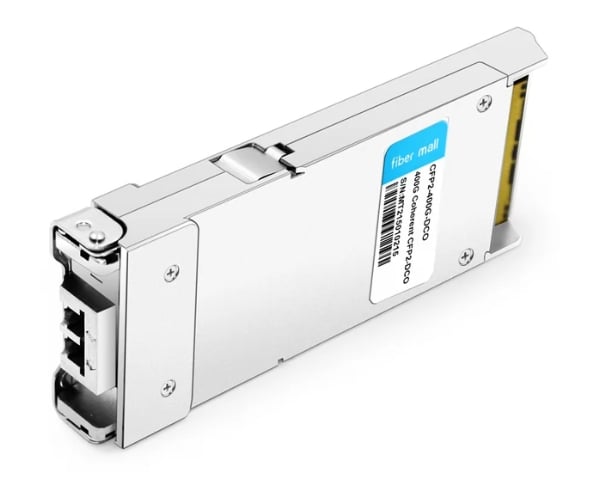
The Role of Digital Coherent Technology
I fully comprehend the explanation provided above. Digital coherent technology addresses the challenge of increasing both the data rate and communication distance without a significant signal loss, thereby revolutionizing optical networks. It uses highly developed algorithms and digital signal processing techniques to overcome the inherent disadvantages of optical fiber communication. To achieve optimal spectral efficiency, digital coherent systems utilize modem techniques including but not limited to QPSK and QAM, allowing more data to be sent through existing fiber networks. It is important to note that such systems are also able to automatically adjust and change their operating mode based on the network status and other conditions which allow for improved performance, something that is crucial considering the rising demands for bandwidth within modern communication systems and networks.
Advantages of DWDM Tunable Capabilities
Tunable features of DWDM (Dense Wavelength Division Multiplexing) provide several functionalities that enhance the versatility and performance of optical systems, networks, and the communications that take place therein. For starters, such features enable the dedication of a certain wavelength to media transport to be responsive to the occurring network and media demands making efficient use of bandwidth. This reduces the number of instances where physical adjusting of the network structures is required, lowering the costs and the complexities of operations in the first place.
Tunable DWDM systems, on the other hand, can support large portions of channels and wavelengths, hence enhancing the network’s scalability; as the demand for data grows and more wavelengths are required, they can be turned on permanently without the need for major enhancements. Finally, these tunable components assist in increasing the network’s resiliency and strengthening its durability. Where maintenance needs arise or where a failure of some part of the network occurs, the switching of wavelengths minimizes the possibility of non-connectivity.
As a result, DWDM tunable capabilities should be seen as important enablers of today’s optical networks. They help maximize data transmission without being too expensive or inflexible, making it more beneficial to expand the networks’ capacity.
Impact on Long-Haul Transmission
Long haul delivery is significantly improved with tunable DWDM capabilities, which boost channel allocation and maximize spectrum utilization efficiency. This technology enables the packing of multiple signals for transmission over large areas with minimum loss of signal quality. This decreases the number of amplifiers and regenerators necessary in the transmission path, which in turn decreases the operational and maintenance expenses. Furthermore, the tunability of the wavelength in the DWDM system also helps to reduce the adverse effects of dispersion and nonlinear effects. As a result, signal performance quality is preserved over large distances. Such technology development guarantees that long-distance networks are solid and flexible enough to support current and future communication needs nagged by tunable coherent technologies.
Why Choose a CFP2 Optical Module?
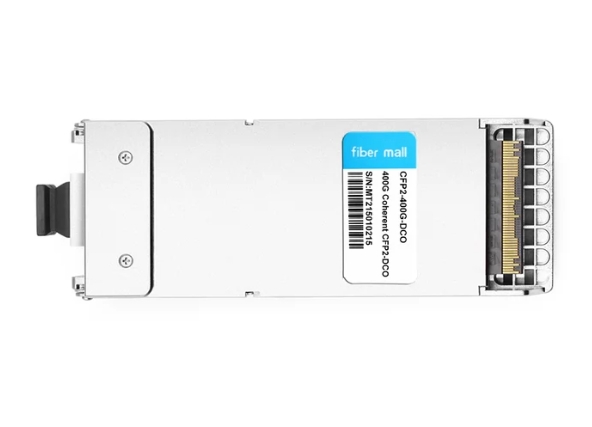
Comparing CFP2 with Other Transceiver Modules
When considering CFSp2 optical modules and comparing them with other transceiver type modules, several points form their salutary blessings. Firstly, it is seen that CFP2 modules have been fashioned in a smaller form than their predecessors, CFP, thus increasing the port density of the network equipment. This size reduction, in turn, means occupied space within the data centers, which results in efficient utilization of the racks. The decreasing space requirement goes hand in hand with the data requirements of the networks. Besides, the presented technology is currently increasing. It often demands cases when a module can work with a hundred gigabit per second speed, which corresponds with the other requirements of the thin. The downside of logic is poor efficiency, with less energy consumed per sent bit, which ultimately translates into better network energy performance. Last but not least, Modules of the second generation were developed with improved tolerance of a wider range of using and plugging into other devices. This fast adaptability and efficiency mean that DMos&EMs IP is favorable for high-density and multi-layered render networks.
Benefits of Pluggable Modules in Network Upgrades
Based on my experience and research over the available top sources, I see that the flexible modular and pluggable module interfaces in network upgrades have the most significant advantages, particularly with the emergence of compliant 400G interfaces due to their scalability and cost-effectiveness. Pluggable modules allow operators of communication networks to meet changing technological and other requirements with relative ease by changing only specific modules instead of whole systems. Such an approach not only increases the network’s operational life but also minimizes the scope of physical changes on the networks in terms of time. In addition, it makes possible staged enhancements thereby allowing enterprises to make good control of their capital expenditures. These modules’ scalability supports an array of configurations, making it possible for them to be effective solutions for various networking scenarios and be used to increase data capacity as demand grows.
Evaluating Generic Compatible Options
From my analysis of the available resources, it is clear that evaluating generic-equipped alternatives requires a complex approach. First, these generic modules are typically much less expensive than their brand-name counterparts, which benefits cost-sensitive companies. Nonetheless, certain aspects such as interoperability, dependability of performance, and technical assistance are critical. It is important that these modules are adequately tested for compatibility with the preexisting network infrastructure to avoid causing operational changes, particularly during the coupling of coherent optical modules. Besides, although costs for the initial purchase may be reduced, it is important to consider the overall cost of ownership, including but not limited to warranty values and maintenance under such an evaluation.
How to Ensure Compatibility with Existing OTN Systems?
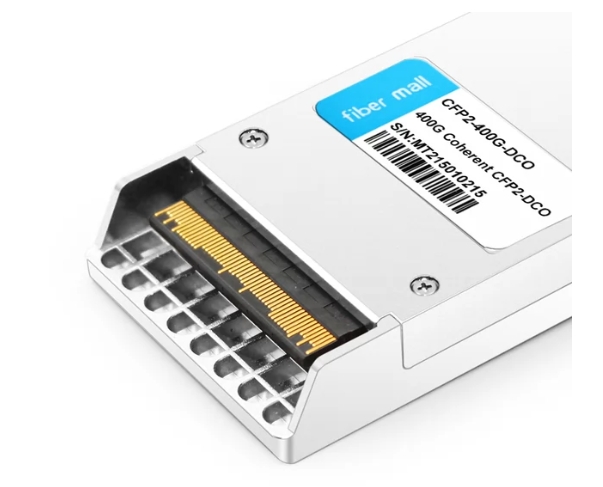
Understanding OTN Function Modules
It is important to know the modules used in the networks while ensuring that the OTN equipment in question is compatible with the pre-existing Optical Transport Network systems. Identify the requirements that your OTN system deems necessary, especially for multiplexing, mapping, or even for the encryption of the signals. Any additional modules should be validated to conform to the industry’s necessary OTN interface requirements. Perform compatibility checks in model networks to ascertain that the new components work with the existing ones. Also, under the two technological documents and support, it would be wise to take care of the needs of proprietary integration where duplex LC connections are concerned. This limits the likelihood of expected shocks and ensures smooth interaction about the OTN topology.
Ensuring Seamless Interconnect with Current Infrastructure
To facilitate the integration with the existing infrastructure, proper importation of modules and current equipment is necessary to evaluate compatibility thoroughly. Start them by outlining the coherent specifications for CFP2-DCO modules perm or by including duplex LC and its characteristics. It also enhances the compatibility of new equipment with acceptable international standards by ensuring that protocols and interfaces in use are all harmonized. After that, thorough interoperability tests should be conducted in contained environments, but conditions should be similar to real-life scenarios. This will include replicating network usage and traffic patterns that are likely to be a source of congestion or incompatibility. Work with vendors to understand such private systems and allow easier integration. Moreover, a well-structured implementation plan should be prepared to reduce threats and close the gaps that exist to guarantee continuity and operation within acceptable levels of disruptions.
Steps to Verify 3rd-Party Compatible Transceiver Modules
- In this review step, the transceiver modules must be cross-examined using technical data sheet analysis to ensure that they meet industry standards and could operate in the current network infrastructure, including the facility’s network architecture, during transmission.
- In this step, the admission testing of the transceiver modules is expected to be done. I suspect the modules would be the transmitting modules or receiver modules, which in turn assist the modulation and demodulation taking place.
- The engineer should simulate the modules in the above-stated representative networks and measure their performance, latency, and error rates.
- The issues that I want to cover during this phase are testing the transmitters and ensuring they are compatible with various vendors’ devices without making them the only devices operating successfully.
- No matter how confident you are about your network topology, consulting vendor support is the best way to identify potential problems that may arise and get recommended configurations that are suited for your network.
- Make sure to log your findings. This may include test results, network configurations, and observations targeting the priority of changing factors during the swapping of the designs. This will enable effective decision-making for future integration of the available networks.
What to Consider in Customer Reviews?
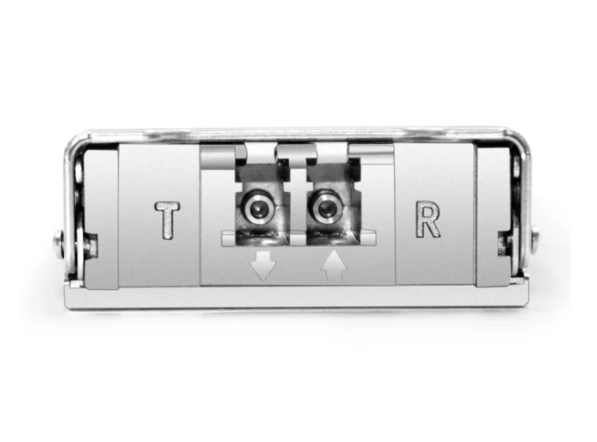
Critical Insights from Write a Review Feedback
- The first area of concern is that of product reliability which involves ascertaining whether any customers have ever reported cases of the product failing to perform its intended purpose and if so, what the most common complaints are.
- The second area focuses on the user experience of the product, meaning how users rate the difficulties they encounter when using and installing the product interface or anything else for that matter.
- The third area is that of performance satisfaction whereby they sought to find out on average how satisfied customers are with the extent to which the various products meet their levels of actual performance against what was promised to be delivered.
- Fourth area of analysis was customer support where users are asked to give a score and state their reasons as to how the customer support services have responded to them in regard to coherent optical module concerns.
- The fifth area for analysis was value for money where users are asked whether their expectations are met in terms of the particular products usefulness to its price, taking into consideration the dissatisfaction/ contentment for the long-term use.
- Finally, the sixth area of concern for the study was reported factors on compatibility concerns whereby users are polled on any recurrent factors that had been raised in regard to the product working with other components or systems already in use.
Assessing Data Sheet Information
Several aspects deserve attention when evaluating data sheet information because it aids in a thorough understanding and selection of the product. First and foremost, detail whether the technical requirement specified in the product description meets the expected performance of the user’s application. For example, review the power needs, bandwidth, and environmental aspects. Another fundamental consideration is to review the compliance standards or certifying bodies that indicate that the product can be utilized in an industry or specific aspect requiring regulation. Again, the validity of the compatibility concerns mentioned should be verified with the current system architecture, and indeed, any compatibility concerns should be known. Lastly, the warranty and support, as stated in the data-sheet, are constructive in understanding the framework of support provided post-sale and what assurance is instilled by the manufacturer, which can affect the reliance and durability of the coherent optical module in future use.
Understanding Customer Priorities in Optics Purchases
In the case of optics purchases, it is necessary to concentrate on customer priorities in several major areas. Clarity, magnification, and degree of precision are performance criteria that customers often regard as vital since they determine how well the optic product will be able to serve its intended purpose. A good number of buyers are also concerned with durability and reliability, that is, the ability of the product to be effective under various environmental stresses and over time. Another level of importance is attributed to ease of use, where ease-of-use features such as essential operating and set-up functions are mostly sought after. Cost is also a significant factor as buyers try to balance the cost and the perceived value of the expected benefits with the long-term value. The influence of the brand and customer service is very often taken into account because these two services will help ensure quality and resolve problems after making a purchase. Focus on these aspects ought to enable the customers to be served better, which will likely enhance their satisfaction and loyalty.
Reference Sources
Wavelength-division multiplexing
Frequently Asked Questions (FAQs)
Q: What is a 400g Coherent CFP2-DCO transceiver module?
A: A 400g Coherent CFP2-DCO transceiver module is developed for Long-Range Optical Communication and Data Center cabling interconnection deployment enhanced with duplex technology. It merges coherent optics technologies with the CFP2 form factor, aiming at delivering 400G bandwidth communications of short reach within a compact, pluggable optical unit capable of duplex LC cable connections.
Q: How does 400g Coherent CFP2-DCO differ from others, such as SFP or XFP form factors?
A: The 400g Coherent CFP2-DCO suffices much higher data throughputs than, say, SFP or XFP modules. The SFP can support up to about 100G and XFP about 10G; however, the CFP2-DCO can transmit rates as high as 400G. It also contains sophisticated coherent optics, hence it is feasible to use for purposes of long-distance data transmission through complex network topologies.
Q: What are the possible benefits of supporting the modules Coherent CFP2-DCO?
A: The advantages of Coherent CFP2-DCO modules include, but are not limited to, high-speed 400G transmission with extended reach capabilities, better spectral efficiency, and, more importantly, full operation with DWDM systems. The modules furthermore allow advanced modulation formats and digital signal processing, further supporting high-performance optical networks within data centers or telecommunications.
Q: Is the 400g CFP2-DCO made for networks having a specific interface?
A: The 400g CFP2-DCO module is intended to fit in with the other network systems that support the CFP2 form factor. It is compliant with the standards for the CFP2 MSA (Multi-Source Agreement concerning the interoperability with CFP2 compliant) of equipment that interposes coherent CFP2 modules. Cross-checking is recommended to establish suitability with particular network devices and platforms.
Q: What are the C-band tunable capabilities that can be found in the 400g Coherent CFP2-DCO?
A: The 400g Coherent CFP2-DCO has C-band tunable capabilities, which allow the module to operate within a C-band spectrum on different wavelengths. This capability provides diversity for the network regarding its design and deployment, as it allows operators to expand or redeploy the network without replacing hardware due to increased or decreased use of the hardware.
Q: Compared to other optical modules, how does the power consumption of 400g Coherent CFP2-DCO fare?
A: A 400g Coherent CFP2-DCO’s power consumption profile relative to other modules such as SFP or XFP is expected to be more significant. The advanced features offered include a higher data rate, which boosts energy expenditure consumption. That said, however, it appreciates a level of power efficiency not available in classical coherent optical solutions. However is when such features might be absent from some modules plural of interest, in this case, the operating conditions will differ to project power use distinctly.
Q: How about the 400g Coherent CFP2-DCO in 50GHz DWDM systems? Do I have any issues?
A: Most definitely not; the 400g Coherent CFP2-DCO is compatible with 50GHz DWDM grid systems as it operates seamlessly on it. The devices used in the system have been manufactured with its coherent optical technology, which, as advanced modulation formats combined with very high data rates, all compress together within the required range so that meshing is easier and high bandwidth is achieved all at once.
Q: Are there other uses or benefits for the 400g Coherent CFP2-DCO in optics storage networking?
A: For optical storage networking, a true killer application technology for the 400g Coherent CFP2-DCO would be for use in the infrastructure interconnections of data centers, such as metropolises, the long-haul and clouds. It has a wide pass of data which allows for connections across multiple points and indeed many, many places, allowing for a smooth flowing transfer and backup of data in the centers.

